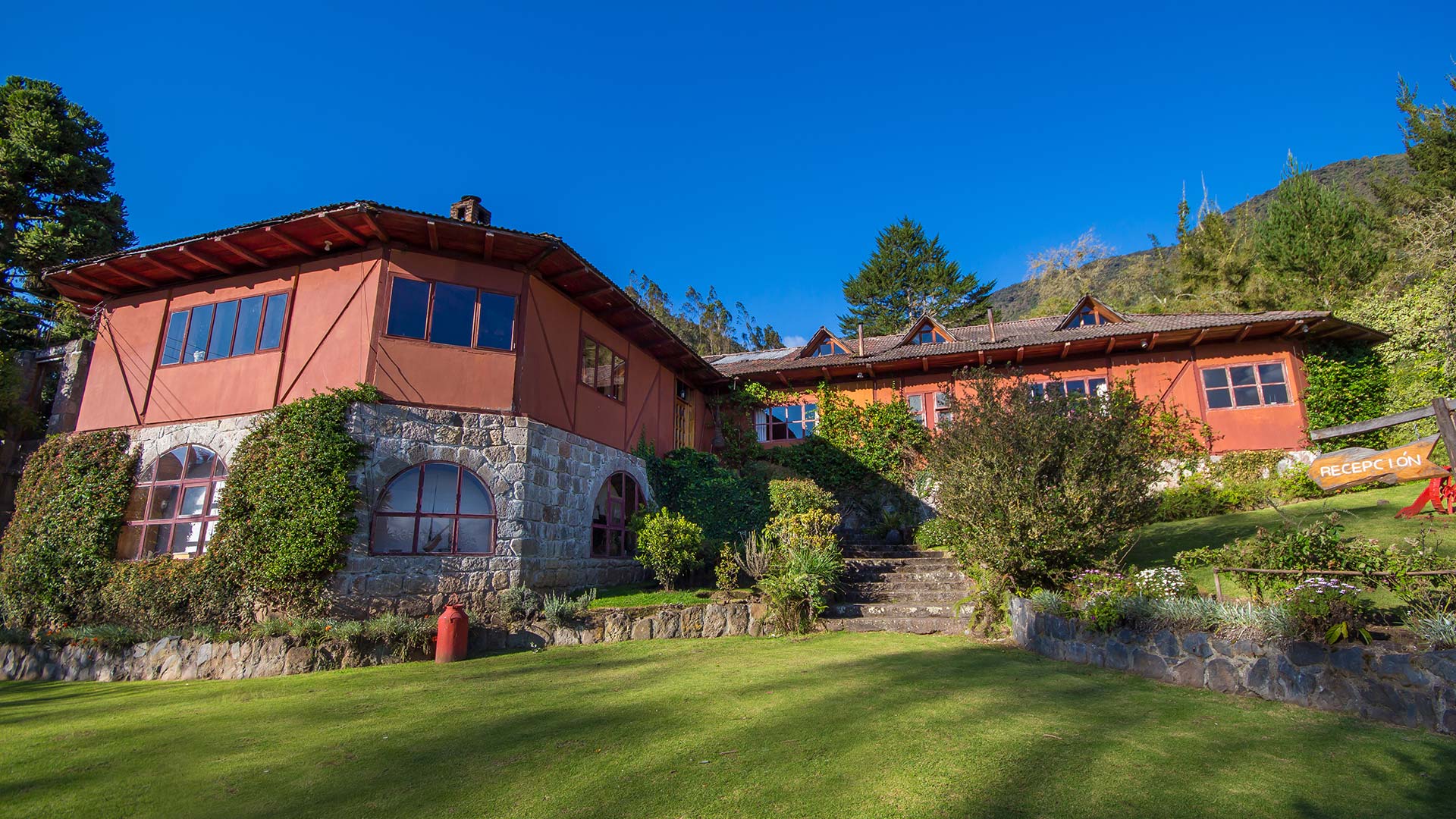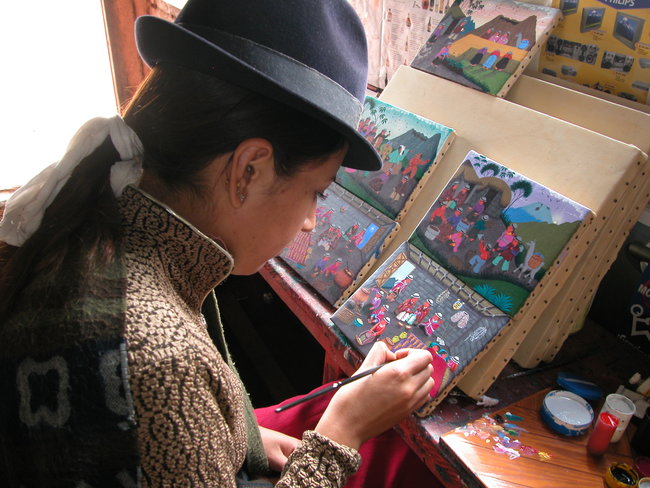This Avenue of the Volcanoes is the most visited region in the highlands of Ecuador and is characterized for its cultural and natural riches; national parks, indigenous markets, archeological treasures from different cultures and two cities declared UNESCO World Cultural Heritage Sites are just a few of the highlights of this amazing destination. This Andean highland of Ecuador is a place where tropical and glacial climates coexist side by side, giving way to hundreds of microclimates, dramatic changes in the ecosystems and plants form virtually every climatic zone of our planet. Discover this unique and amazing treasure during your trip!
From Quito
Quito
From 3 to 6 days
One of the closest open lodges to Cotopaxi, offering a truly unique and safe encounter with an active volcano while you live Legendary Moments.
Its forests and wildlife make this peaceful place an ideal ambient to escape.
Located in Riobamba, this hacienda marries tradition with comfort and relaxation near one of the main cities in Ecuador.

One of the closest open lodges to Cotopaxi, offering a truly unique and safe encounter with an active volcano while you live Legendary Moments.

Its forests and wildlife make this peaceful place an ideal ambient to escape.

Located in Riobamba, this hacienda marries tradition with comfort and relaxation near one of the main cities in Ecuador.
*The selected hotels are subject to availability at time of booking the tour. In case of unavailability, we will offer a hotel of the same caliber.



* Tours and itineraries suggested by Bespoke Galapagos in order to have a functional trip.
** Excursions may change due to climate conditions.




* Tours and itineraries suggested by Bespoke Galapagos in order to have a functional trip.
** Excursions may change due to climate conditions.

Accomodation:Mama Cuchara
Meals Included: Lunch & Dinner

Accommodations: El Provenir
Meals Included: Breakfast – Lunch - Dinner




* Tours and itineraries suggested by Bespoke Galapagos in order to have a functional trip.
** Excursions may change due to climate conditions.
From your hotel, we will step back in time as we make our way toward the Historic Centre. We will walk down quaint cobbled streets lined with beautiful brightly colored colonial houses roofed in old tiles with balconies dressed in flowers, watched over by the winged Virgin of Quito sitting up on the ‘Panecillo.’ The ‘Panecillo,’ so named for its bread-like shape, is actually a parasitic crater formed by magma from Pichincha Volcano.
We start our tour in the heart of Quito, in the Garcia Moreno Street. This street, also known as the Calle de las Siete Cruces (street of the seven crosses) was an Incan route to the Panecillo, a hill thought to have been a Centre of worship to the Sun and Moon Gods. This Incan avenue was transformed into the street most heavily influenced by Christianity in Quito when the Spanish arrived. They erected seven crosses along the avenue to make the indigenous people believe in the Catholic God. We walk along this street to the Plaza de la Independencia.
On the south side of the square lie one of the oldest cathedrals in South America and the sacred heart of the city: La Catedral de Quito, an impressive white-walled building with green glazed ceramic domes.
The symmetrical
Palacio de Carondelet, the Presidential Palace, runs along the western side of the square, its overhanging balconies a gift from the French Government and originally from the Palace of the Tuileries in Paris. We look in at the
ancestral interior courtyard of the Centro Cultural Metropolitano, whose previous lives include: tobacco factory, prison, and university. A few buildings up past the Biblioteca Nacional is the incomparable Iglesia de la Compañia,
a Jesuit church overflowing in Baroque art, it’s tragic history covered in gold concealing the devastating fire and earthquake that shook it.
(Please take note that the church is closed for service on Sundays)
The great Plaza de San Francisco and its church have been a Centre of activity since pre-Incan times when the square was the Tianguez (main marketplace).
We will search for the mythical stone of Cantuñas legend in the church’s vestibule and visit the museum, which houses four thousand pieces including sculptures and oil paintings from the Escuela Quiteña’. The works of art on display
by artists like Miguel de Santiago, ‘Caspicara’ and Bernardo de Legarda show the mix of indigenous and European styles: angels with Andean features and virgins dressed in wide skirts shaped like volcanoes.

As we enter the national park, our drive brings us out onto the plain of Laguna de Limpiopungo, a lake fed by water from the volcano Rumiñahui which towers over it. Legend remains that the Inca Rumiñahui hid his gold up on the mountain, prompting numerous search parties have set out to find it - some never to be seen again. At the water’s edge the park wildlife comes to drink; ducks, swallows, frogs and toads gather, and you may spot an eagle or even the great Andean Condor. At Lake Limpiopungo we will have a hot cup of tea and a snack before setting on a short walk around the lake.
If the sky is clear we can catch beautiful views of Cotopaxi and the surrounding volcanoes of Rumiñahui, Sincholagua, Pasochoa and (with luck) the shy Antisana. As we walk across the paramo, we will likely spot hawks, foxes, llamas and maybe deer.

We will stop here at a ceramics workshop to see how they work with clay and the techniques they use to paint final products.

When we have reached the rim of the crater, a nice, easy walk takes us down some 200m to the shore of the dazzling emerald-green Quilotoa lake, whose color is the result of minerals let out by the still active volcano. The lake was formed when, after several violent eruptions, the crater filled with water creating a stunning, natural wonder.

The town has a certain charm and perfect weather year-round, attracting national and international tourists. While in Baños, we will visit the cathedral and central square, which is usually bustling with people and colorful offers of food, candy, toys, and many other things.

From Baños, we will drive down towards the jungle to see the many waterfalls of the Pastaza River gorge, around 300 meters deep. We will stop at the most famous waterfalls before reaching our destination in the Parroquia Rio Verde. Here we will walk for around 15 minutes on a path that crosses the cloud forest and ends in one of the most amazing wonders of nature: el “Pailon del Diablo” (the “Devil´s Cauldron”). The Pailon is a huge waterfall that falls into a big cauldron of rocks, which has been formed by the force of the falling water. For the more adventurous, there is a small tunnel carved in rock that lets you reach the back of the waterfall - a wet adventure due to spraying water, but a highly memorable experience!

The ‘Devil’s Nose’ as it is known, is an unforgettable train ride down an incredibly steep mountain pass; the train zig-zags on hairpin turns all the way down the mountain and then back up again.

The Ingapirca ruins are constructions of perfectly carved stones that fit together seamlessly. The main site is the elliptic structure of the Temple of the Sun, used for the ceremonies and rituals of the Cañari and Inca cultures. Among the remaining buildings, we will also find a cemetery, solar observatory, paths, priests’ chambers, and a large plaza.

The beauty and colonial ambiance of Cuenca is best experienced on foot. Our tour weaves its way through the old town center, designated a World Heritage Site by UNESCO and starts with a visit to the Old and New Cathedrals. We then continue to the famed “Plaza de las Flores,” where a flower market takes place every day, offering a wide variety of fresh flowers including arum lilies, lush tropical blooms, plants and bouquets which set the cobbled town square ablaze with color.
On this half day city tour of Cuenca you’ll discover some of the main sights of the city including the Museum of Modern Art, New Cathedral, the famed local flower market and the Barranco with its historic houses perched on cliffs high above the rushing Tomebamba River.

El Cajas National Park is one of the biggest wetland reserves in Ecuador and has an extension of 30,000 hectares of forest and moorland, with more than 230 lakes spread across the protected area. Due to the different altitudes and humidity on this irregular terrain, this reserve has many different microclimates and ecosystems, making for an ideal home for many animals, especially birds and amphibians. We will have a short walk in the park to appreciate the surroundings and this magical ecosystem.